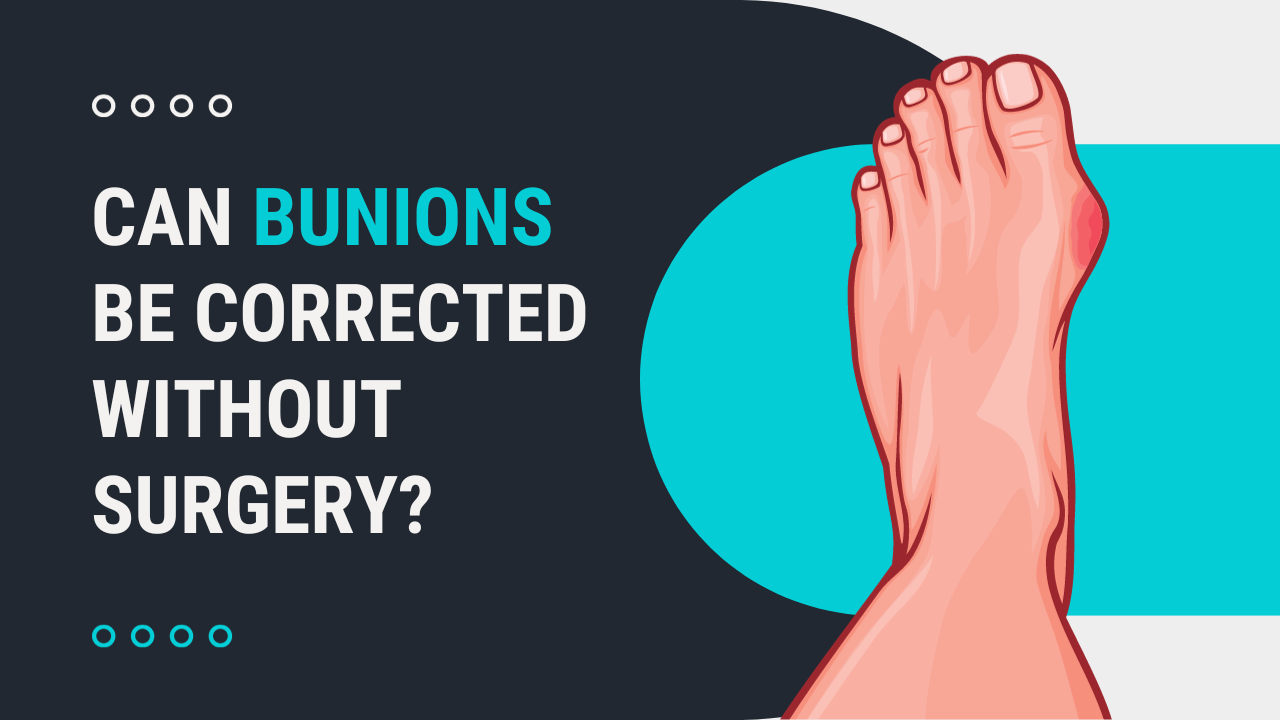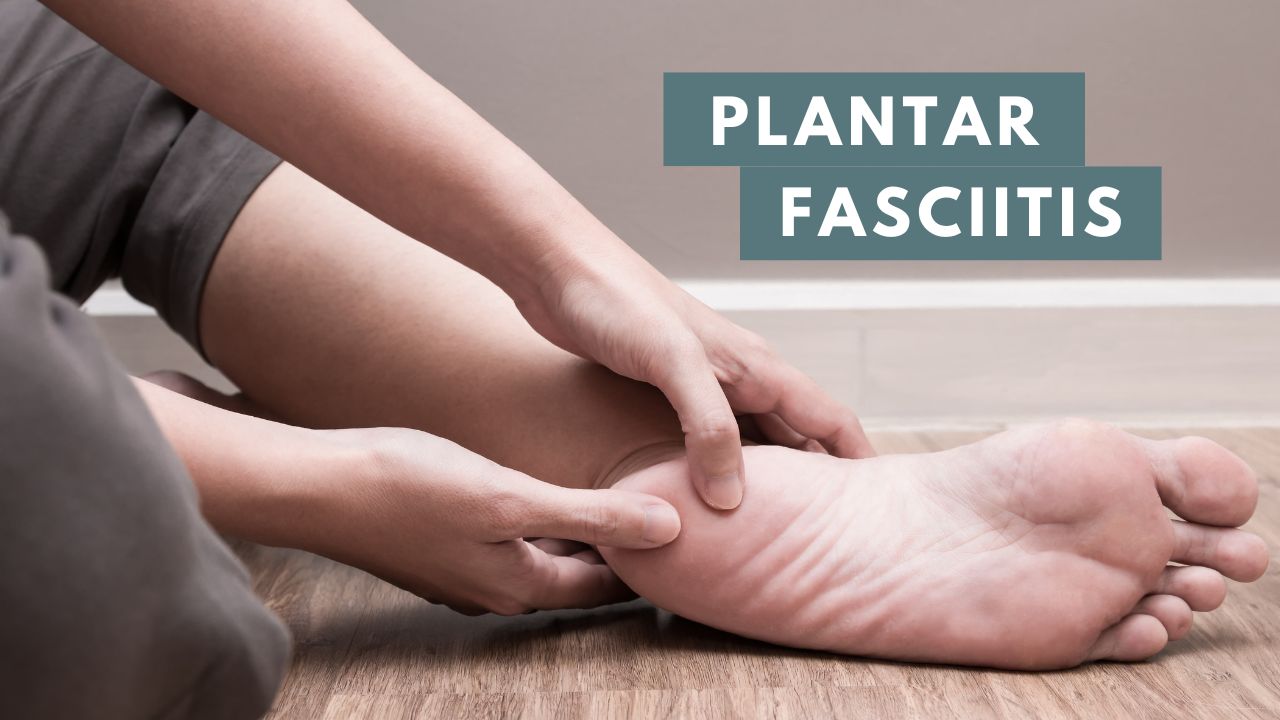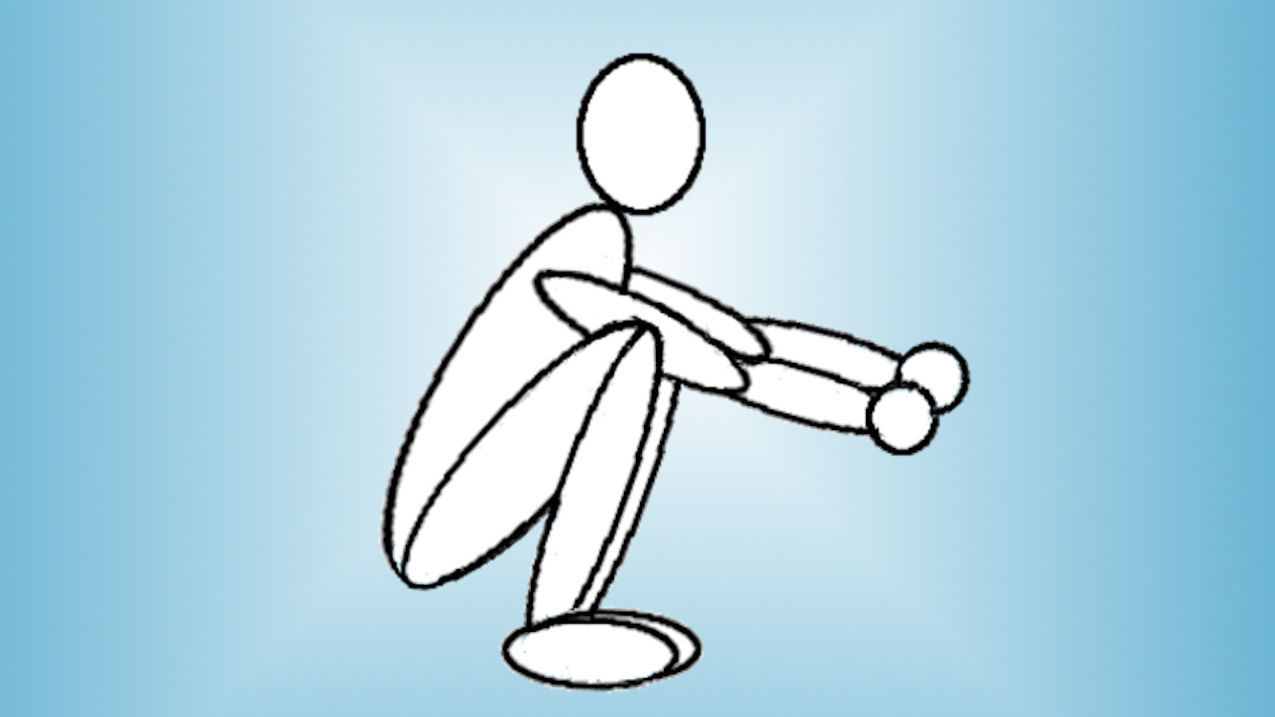Forefoot varus is the angling or inverted position of the bones in the front of the foot relative to the heel. In an uncompensated forefoot varus deformity, this causes the bones on the inside edge of the foot to sit higher off the ground than the outside of the foot when standing.
Below is how forefoot varus would look on the right foot when viewed from behind.
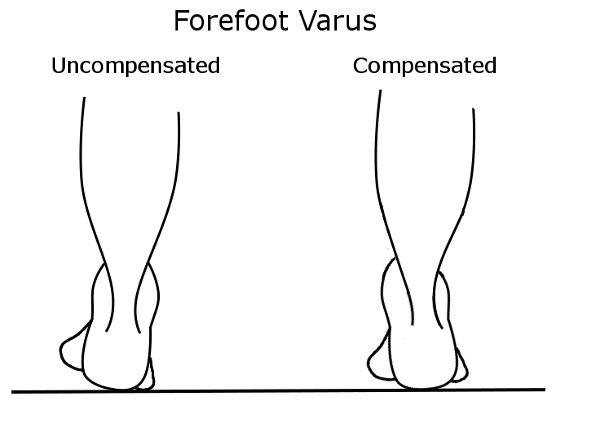
I like to think of the stable position of the foot as a tripod, with the three points of contact being the:
- heel
- little toe joint
- big toe joint
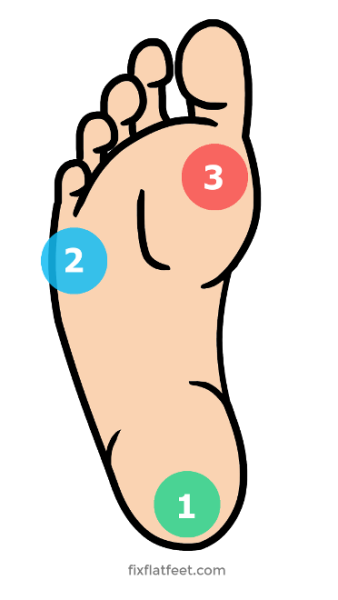 With an uncompensated forefoot varus positioning there will only be two points of contact:
With an uncompensated forefoot varus positioning there will only be two points of contact:
- the heel and
- the outside edge of the foot.
In order to get the inside part of the forefoot to the ground, a common compensation is pronation of the foot or rolling inward.
In other words, the heel will evert (angle outward) so that the inside of the foot can make contact with the ground in the compensated position.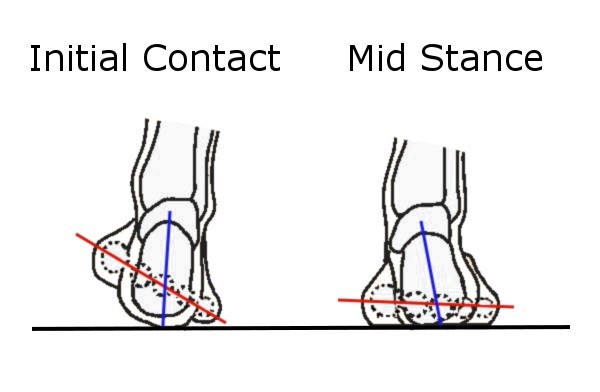
Elevated First Metatarsal
An elevated first metatarsal head can cause similar problems as a forefoot varus and the two conditions can occur together. When the metatarsal head of the first ray sits higher than the rest of the metatarsal joints the foot may pronate and also occasionally turn outward to get the first met head to the ground.
Correcting Forefoot Varus
When the forefoot varus angle is related to soft tissue limitations this is sometimes called a flexible forefoot varus or what is more commonly referred to as forefoot supinatus.
Forefoot supinatus is a soft tissue adaptation that likely results from insufficient pronation control. It is not necessarily the cause of excessive pronation. Still, I discovered that to fix a collapsing arch these soft tissue changes need to be corrected.
It’s reported that supinatus is much more common than a rigid forefoot varus. A rigid deformity would mean that either the position or shape of the bones is blocking movement making it unlikely to respond to corrective exercises.
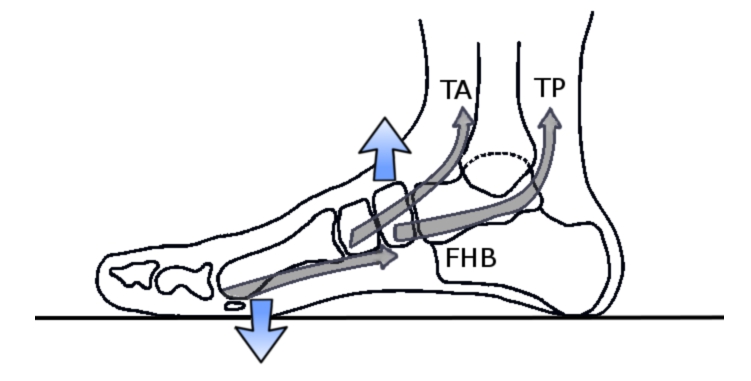
In my case, I was dealing with a forefoot supinatus. But only on my right side.
The goal of the exercises I performed for correcting the supinatus was to strengthen the muscles that invert the heel while pronating the forefoot. This involved, in part, using muscles that pull the base of the big toe down while preventing the heel from everting.
